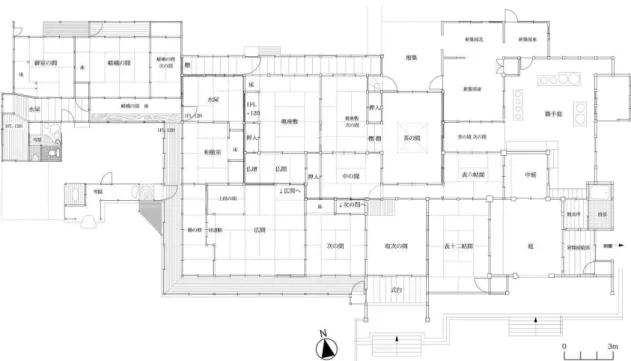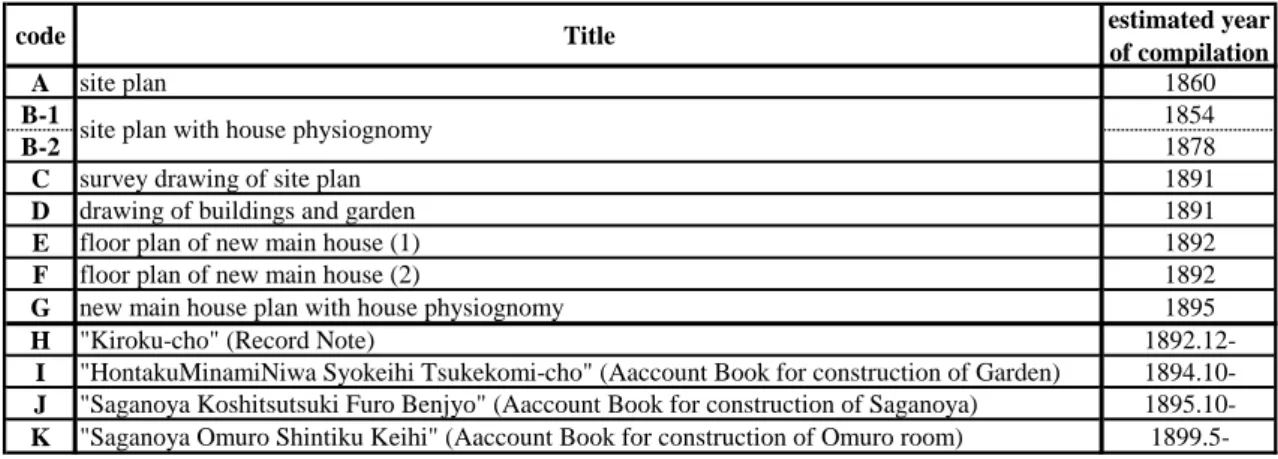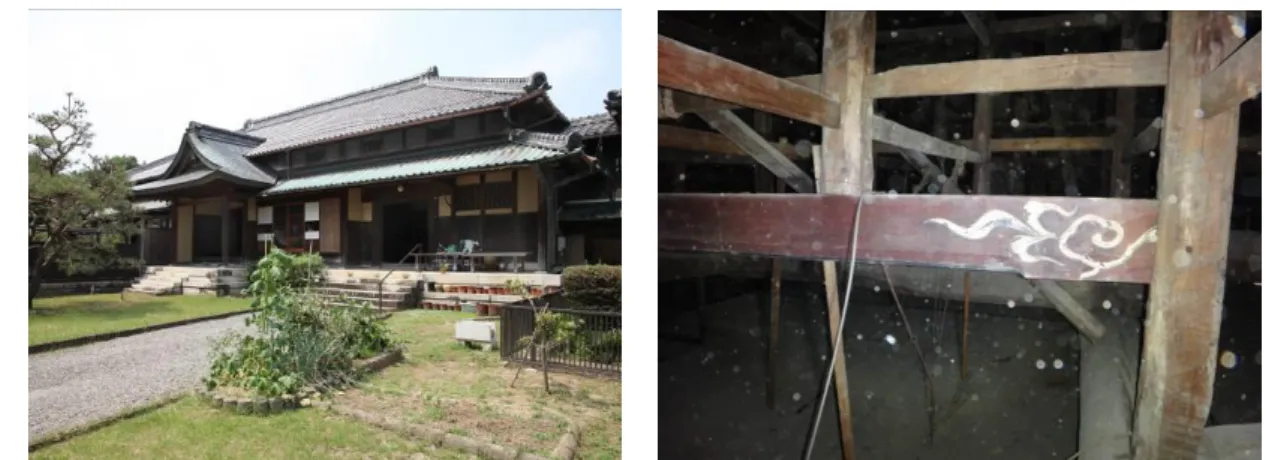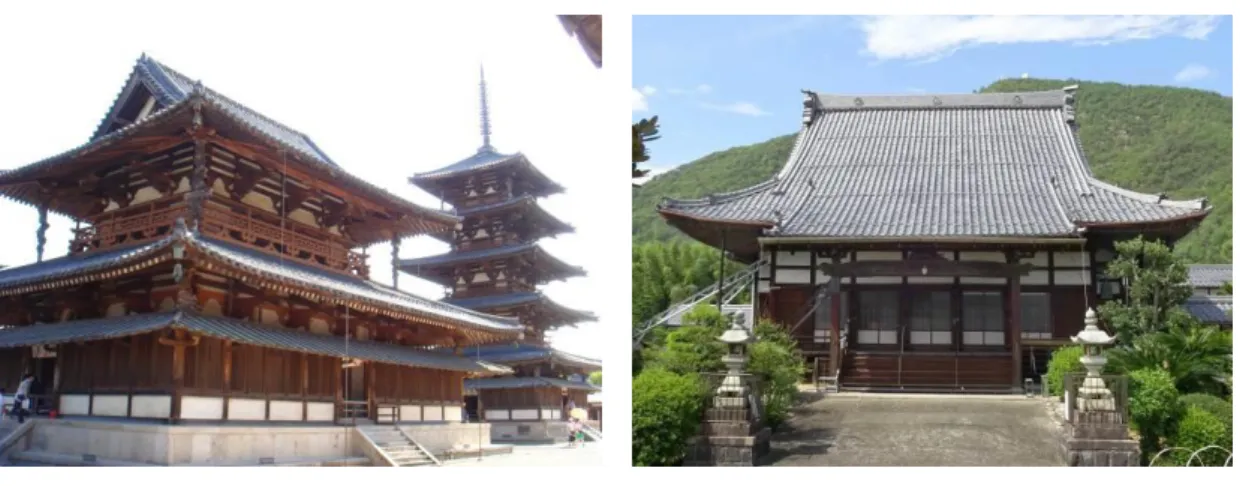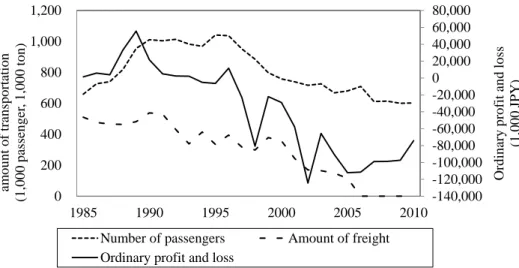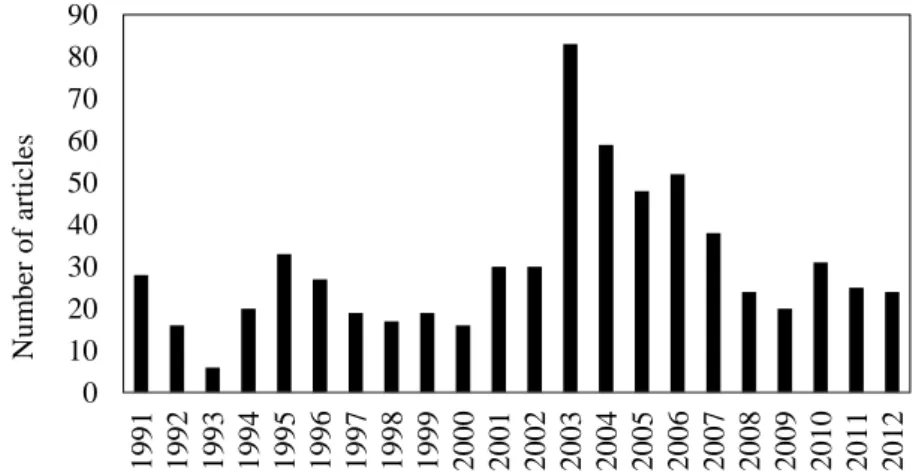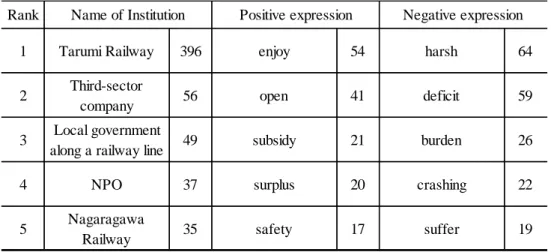161
IMPORTANCE OF PAST DISASTER RECORDS -A CASE STUDY OF ITS APPLICATION AFTER
THE NOUBI EARTHQUAKE IN GIFU-
aTakahiro Shimizu,*,†,
aDepartment of Architecture, National Institute of Technology, Gifu College, Japan Email: t-shimizu@gifu-nct.ac.jp
*Presenter; † Corresponding author.
Abstract: The damage from natural disasters, such as earthquake, typhoon, volcano eruption, and so on, to constructions and cities has happened repeatedly in Japan. It cannot be said the sustainable society, if we just wait for the next disaster with doing nothing and rebuild the infrastructures and buildings each time. As a matter of course, we have learnt many from a lot of disasters and its damage. It is important to record, reconsider and exploit the tragedy as a valuable opportunity what we can learn from. In this study, the simple devices which was based on the remaining records of the Noubi Earthquake, individual measures with technique of trial-and-error by the general people, given to a certain residence is analyzed. To figure out achievements of our predecessors implemented promptly after damage, and to know application of traditional architectural technique to countermeasures against disaster, those are very curious and meaningful experiences. The importance of the approach that considered not only a new approach that used the latest technology but also the traditional approach that had been piled using the experience and wisdom in a word that was rooted in history and culture, through the records, it became clear in this study.
Keywords: Past Disaster Records; Countermeasures Against Disaster; The Noubi Earthquake; Traditional Architecture
INTRODUCTION
The damage from natural disasters, such as earthquake, typhoon, volcano eruption, and so on, to constructions and cities has happened repeatedly in Japan. The Noubi Earthquake, an 8.0 magnitude earthquake, occurred in Gifu on October 28th, 1891. It was a devastating earthquake killed more than 7,000 people and injured more than 17,000 people. And it was also reported about 140,000 buildings totally collapsed and about 80,000 buildings half-collapsed. Table 1 shows the fundamental data of the Noubi Earthquake. It cannot be said the sustainable society, if we just wait for the next disaster with doing nothing and rebuild the infrastructures and buildings each time. As a matter of course, we have learnt many from a lot of disasters and its damage. It is important to record, reconsider and exploit the tragedy as a valuable opportunity what we can learn from. In this study, the simple devices which was based on the remaining records of the Noubi Earthquake, not big countermeasures against disaster by the country and specialists but individual measures with technique of trial-and-error by the general people, given to a certain residence is analyzed.
This Paper has been Presented at The 5th Environmental Technology and Management Conference (ETMC 2015)
162
Table 1. Data of the Noubi Earthquake
Date 28 October, 1891 Magnitude 8.0Ms
Epicenter Nishi-Neo Town (present Motosu City), Gifu Prefecture More than 7,000 dead
More than 17,000 injured approx. 140,000 total collapsed approx. 80,000 half-collapsed Casualties
Building damage MATERIALS AND METHODS
First of all, we overviewed of the disaster records about not only the Noubi Earthquake but also various disasters around Gifu City. Obviously a lot of detailed information and the situation afterwards can be confirmed from the newspaper and the architectural magazine about the damage of the Noubi Earthquake. On the other hand, the records about other disasters, for example typhoon and flood that more frequently hit the region for research than earthquake, show only Public Record of the simple numerical data. In such records, the detailed information of individual constructions and the situation afterwards until restoring all things are scarce. Thus, not only objective information but also more important records by the person concerned are collected and analyzed. For instance, Figure 1 shows the description from diary of chief priest at Shinryu-ji Temple in Gifu.
Figure 1. Diary of Chief Priest at Shinryu-ji Temple
“Wind and rain gradually became severe from 11pm on September 25th, 1921. At half past 11pm a big rain storm had come. And then it had calmed down at half past 4am on September 26th. The damage of our temple are as follows: 1. Main gate collapsed. 2. Bell tower and roof are half-collapsed. 2[sic]. Giant tree collapsed. 3. Main hall is leaning.”
That is a kind of record a person concerned only knows. As an individual damage case, it is also important to know which building collapsed or what building survived.
REVIEW
There are many previous research about the Noubi Earthquake (e.g. [1]-[3]). Most of them are a research on the mechanism and the active fault of the earthquake, and a document
163
that chiefly recorded casualty toll and damage situation. The early studies referred in detail about disaster record of construction, and countermeasures afterwards are known (e.g. [4][5]).
After long periods of time, for example Nishizawa revaluates the records and facts (e.g.
[3][6][7]). These are all important studies, but all of them are based on records by third party such as government agency and general architects. Meanwhile, in this study records by the person concerned are also analyzed.
PUBLIC DISASTER RECORDS
Recently, information on the disaster is immediately transmitted around the world through TV, the newspaper, the Internet, SNS, etc. with texts, photos, or videos. On the other hand, things were recorded by texts, pictures, and word of mouth until early modern period.
Therefore it was not widely shared.The Noubi Earthquake is located in transition period. That was the first big earthquake which modern Japanese society faced. It was also the first disaster to investigate by specialist and record the damage by photograph. Moreover through the newspaper, the damage information was reported to all over Japan comparatively in a short term.After the Noubi Earthquake it is known well that a lot of leading specialists and researchers of that time proceeded to the stricken area from Tokyo and surveyed and analyzed.
And then the results were published in an academic journal and used for architectural designs, and it contributed to the control of the expansion of the Great Kanto Earthquake(1923) damage. Concretely, because of wide spread of information about fall of Nagara-gawa River Iron Bridge (Figure 2, [8]) and damage of Nagoya Postal Telegraph Office which was a two-story brick building (Figure 3, [8]), the earthquake engineering of iron bridge and especially brick construction had developed.
Figure 2. Fall of Nagara-gawa River Iron Bridge (Source:Photo book of the Noubi Earthquake [8] )
164
Figure 3. Damage of Nagoya Postal Telegraph Office (Source:Photo book of the Noubi Earthquake [8] )
On the other hand, naturally a lot of wooden buildings were struck by the earthquake. A public record and the news report do not necessarily show a complete and correct realities because it is sometimes likely to be given priority to a grasp of various circumstances and overall trend, and priority to the interest in sensational phenomenon. The large majority of wooden buildings where they had lived collapsed much more than the brick construction.
Countermeasures for the wooden buildings (not for the brick construction, however it was impulsively destroyed) were more serious problem for victims. That is to say, it was more important for them to improve earthquake resistance of wooden buildings rather than brick construction.
Therefore, it became clear that a true situation of victims on the site cannot be understood and connect with appropriate countermeasures if only public disaster records are used. In a word, the record by the person concerned is extremely important in the disaster records.
PRIVATE DISASTER RECORDS - COUNTERMEASURES AND THE RESULT- The Hayakawa Residence is located on approximately 9,000 square meters site beside the approach way to a famous shrine, Chiyobo-inari Shrine, at Kaizu city in Gifu. This region is placed between two big rivers, so it is influenced by a lot of natural disasters such as flood damage and the typhoon that occurs one after another, and also earthquake. The epicenter of the Noubi Earthquake is only 40km away. Shuzo Hayakawa was born as the first son of a wealthy farmer, the Hayakawa family, in August, 1863. He became a prefectural assembly member in 1890, concurrently worked for a local bank as an executive, and was elected to a member of the House of Peers in 1897. He played an active role in politics and industry.
The members of Kawata laboratory, Nagoya Institute of Technology and Shimizu laboratory, National Institute of Technology, Gifu College investigated the buildings, the records and materials at the Hayakawa Residence in July and September, 2012. Figure 4 shows a current floor plan drawn by using the measured data.
165
Figure 4. Current floor plan of the Hayakawa Residence
Table 2 shows a list of records confirmed by the investigation which includes eight historical drawings and four text records. Material A-D are arrangement plan of the buildings in the site before and after the Noubi Earthquake (1891). Material E-G are drawings for floor planning of a main house of the Hayakawa Residence (Figure 5) started constructing in March, 1892. It shows the transition of various buildings of the Hayakawa Residence, in particular number and shape of buildings faced the earthquake and revival situation. Material H-K are text records concerning the buildings constructed after Noubi Earthquake, and especially Material H, "Kiroku-cho -Record Note-", is the research object of this study.
Table 2. List of the records at Hayakawa Residence
code Title estimated year
of compilation
A site plan 1860
B-1 1854
B-2 1878
C survey drawing of site plan 1891
D drawing of buildings and garden 1891
E floor plan of new main house (1) 1892
F floor plan of new main house (2) 1892
G new main house plan with house physiognomy 1895
H "Kiroku-cho" (Record Note) 1892.12-
I "HontakuMinamiNiwa Syokeihi Tsukekomi-cho" (Aaccount Book for construction of Garden) 1894.10- J "Saganoya Koshitsutsuki Furo Benjyo" (Aaccount Book for construction of Saganoya) 1895.10- K "Saganoya Omuro Shintiku Keihi" (Aaccount Book for construction of Omuro room) 1899.5-
site plan with house physiognomy
166
Figure 5. Hayakawa Residence Figure 6. Secondhand Wooden Material
"Kiroku-cho -record note-"
"Kiroku-cho" is a detailed Record Note about the damage of the Noubi Earthquake that Shuzo Hayakawa recorded. In the Record Note, the struck buildings are classified into three groups, collapsed, half-collapsed and undamaged. Moreover it shows the probable reason of each situation. For instance, “Because of lack of walls, braces, and beams”, “By the reason why wooden shingle roofing is light”, these descriptions are valuable information which only the person concerned is possible to record. The judgments of the struck buildings, such as repair, relocate and reconstruct, or demolish, are decided according to the analyzed situation.
It is common in Japan to repair (disassembling a frame of building, replace a faulty member, and restructuring) or relocate and reconstruct the old traditional wooden buildings. It is also usual that even the dismantlement materials from the demolishing building are recycled as materials of new construction. There are numerous traditional architecture cases of using the secondhand wooden materials. For example, Figure 6 shows a member of roof truss of the Main Hall at Shinryu-ji Temple in Gifu. The beam located in dark and out-of-sight attic is strangely decorated. Those devices for forestry preservation and effective utilization of wood are one aspect of sustainability in Japanese culture.
COUNTERMEASURES
A main house of the Hayakawa Residence began to reconstruct within half a year after the Noubi Earthquake, "Kiroku-cho -Record Note-" showed some countermeasures created by Shuzo Hayakawa and master carpenter Ichiroji Ito. Those are as follows: I. raised ground level. II. pine pile. III. concrete on ground surface. IV. bolt. V. earthquake-beam. The construction ground was raised by approximately 750mm. [I.] It was used a lot of pine piles of 150mm in diameter and 3m in length for ground improvement. [II.] The ground was dug up to the depth of 2.4m and piling 9-10 pine piles to each of 40 holes, and poured concrete.
[III.] The wooden columns, standing on the foundation stone especially supplied from the Mikawa region, were reinforced with iron materials and bolted on in the upper part of the column. [IV.] The member of roof truss that was called “Jishin-bari (earthquake-beam, two
167
log beams were crossed)” was installed in the back of the ceiling. [V.] Only a few similar examples are known but it is not general technology.
All of the above-mentioned countermeasures are the simple applications of the traditional techniques (, not using new technology) that two people (the client and the carpenter) devise.
In some cases, it might be criticized as the hasty response. After a certain period, the effect is verified and the useless one is dumped into the dustbin.
They did not wait for the development of the theory or the enactment of the system by the government. It shows an importance of doing something, thinking what they could do at once, and making an effort individually even a little. It only repairs if there is a great difference between the countermeasures already done and the statement from government agency and researchers after a long while. Actually, the government agency for seismic disaster launched after one year from the Noubi Earthquake. After several years, they encouraged the use of bolt and diagonal bracing for wooden buildings in their statement. That was not so different from the countermeasures that had already been given to the Hayakawa Residence.
The improvement of earthquake resistance (though it might be the same for everything) based on the experience has been done for a long time, and that is rule of thumb. It sometimes needs prompt response with traditional and existing technology, without excessive expectations and persistence in new technology. Still the Hayakawa Residence is alive after nearly 120 years in use without big damage by flood and typhoon.
DISCUSSION
It is clear that it is not drastic measures of new structure, material, and construction method for natural disasters based on the public records, but devices created by one client or one carpenter based on the private disaster records is important. In addition, to decrease the disaster damage in the future, unknown private records should be collected, and analyzed. It is also important not only to collect old records but also to record a new disaster if it occurs in the future. The countermeasure is not considered if there is no record, and then the damage happens over and over again.
On the other hand, as pointed out by Nishizawa ([6]) when the disaster is recorded and analyzed it is necessary to pay attention to not only "What building broke." but also "What building remained.". Figure 7 shows Horyu-ji Temple in Nara, one of the oldest wooden buildings existing in the world that constructed over 1000 years ago. Figure 8 shows the Main Hall at Shinryu-ji Temple in Gifu that constructed about 10 years before the Noubi Earthquake. In the background of survival from various natural disasters, there are technologies and devices that have been cultivated in the history. Although it does not refer in detail in this study, effect of traditional construction method is pointed out as the reason (e.g.
[9]).
168
Figure 7. Horyu-ji Temple Figure 8. Main Hall at Shinryu-ji Temple
The techniques and lessons concerning construction of traditional architecture have been handed down from generation to generation by carpenters. A part of them were recorded in the Japanese traditional architectural reference books (,which had been already researched enough for many years (e.g. [10])) . The importance of any kind of records is recognized again.
CONCLUSION
To figure out achievements of our predecessors implemented promptly after damage, and to know application of traditional architectural technique to countermeasures against disaster, not to invent a new construction technology with spending much time, those are very curious and meaningful experiences. The importance of the approach that considered not only a new approach that used the latest technology but also the traditional approach that had been piled using the experience and wisdom in a word that was rooted in history and culture, through the records, it became clear in this study.
In this study, one of the different method for improvement of strength against disasters with using records was shown.
ACKNOWLEDGEMENT
The author is grateful to Mr.M.Hayakawa and Mr.T.Nakanishi for providing the records, an opportunity to survey, and many suggestions. The author is also greatly indebted to Professor K.Kawata and his laboratory for joint survey of the Hayakawa Residence.
REFERENCES
[1] Fusakichi Omori, 1893. Preliminary report of the Noubi Earthquake 1, The Journal of the Geological Society of Japan: Volume 2, Pages 42-55.
[2] Gifu nichinichi Shimbun, 1 November, 1891. the Great Earthquake (newspaper article), extra edition, Japan
169
[3] Special investigation committee on succession of disaster lessons, 2006. the 1891 Noubi Earthquake Report, Central Disaster Management Council, Japan
[4] Chuta Ito, 1891. Earthquake and Brick Construction, Journal of Architecture and Building Science:
Volume 59, Pages 291-295.
[5] Imperial University, 1891. The compilation by the Imperial University about the earthquake, Journal of Architecture and Building Science: Volume 59, Pages 303-304.
[6] Yasuhiko Nishizawa, 2012. Building damage associated with the 1891 Nobi earthquake and its effect on earthquake engineering, Active Fault Research: No.37, Pages 45-51.
[7] Masayuki Takemura, 2012. Characteristics of disaster from the 1891 Nobi earthquake compared with the 1923 great Kanto earthquake, Active Fault Research: No.37, Pages 39-44.
[8] Research conference of local materials in Gifu, 2009. Photo book of the Noubi Earthquake, reprinted edition, Japan
[9] Preparatory Committee on technology of Japanese traditional wooden architecture for Intangible Cultural Heritage, http://dentoh-isan.jp/ (10 October, 2015).
[10] Takahiro Shimizu, Katsuhiro Kawata, Akira Naito, 2005. A study on the design system of tahoto pagodas in Japanese traditional architectural reference books, Journal of Architecture and Planning: No.591, Pages 155-160.
171
TIME - SERIES ANALYSIS ON MASS MEDIA REPORT AND UTILIZATION ANALYSIS ON SOCIAL MEDIA
- CASE OF LOCAL RAILWAY -
aJun Sakamotoa,*,†, bKazutaka Kubota, cShotaro Yadac
aNational Institute of Technology, Gifu College, Japan, bJapan Freight Railway Company, Japan,
cCentral Japan Railway Company, Japan Email: sakamoto@gifu-nct.ac.jp
* Presenter; † Corresponding author.
Abstract: In Japan, many local railway companies have serious problems: passenger decrease and motorization. In addition, some of them have been encountered the crisis of bankruptcy. However, they make an effort to operate for not only passengersbut also cities. How has mass media reported the fact?
The information provided by mass media is important to make public opinion. Also, with the development of internet, it has become easier to spread an individual opinion by social media.
Especially, social networking service: SNS, is already recognized as an effective way. In this study, first of all, mass media report of local railway is analyzed. Then, utilization of social media related tothe railway is clarified.
Keywords: Local railway; Mass media; Social networking service; Text mining
INTRODUCTION
In Japan, passenger decrease in local railway has been continuing in the long due to fewer children and motorization: the number of passengers decreased 17% since 1987. Many local railway companies have been struggling; for example, although the number of employees decreased 28%, 76% of companies have a huge debt and faces bankruptcy.It is said that some of them have a difficulty to do a minimum safe maintenance [1]. Under this situation, these companies have made an effort to manage:
implementing a promotion of utilization, holding an event for local development with a local government and residents. However, how did a mass media report these facts?
Newspaper and TV have a great power to change public opinion. According to the investigation [2], the percentage of readers of newspaper (morning paper) is 77%, and the percentage of those who refer a paper when making an opinion about an incident is approximately 50%.
In the utilization of social media, with the development of internet technology, it has become easier to spread individual’s opinion. The percentage of users of internet is 82.8% in 2013 [3], and it will increase in the future. Especially, SNS: Social Networking Service, such as Facebook and Twitter, new social media, the number of users has been dramatically increasing. It can be possible to communicate among users and to spread information easier; in short, its function is different from weblog and website. It is expected to use an efficient and effective information and
172
communication way of city development [4]. In the report of how to support a local railway in the future, it is concluded that utilizing such a social media is an effective way to inform to visitors [5].
Hence, the objective of this study is to analyze mass media reports related to local railway in chronological order and utilization of social media presently.
TIME-SERIES ANALYSIS ON MASS MEDIA REPORT Case Study
This chapter analyzes the tendency of mass media report related to Tarumi railway. This railway company was built in 1984, transformed from Tarumi line, a line in Japan National Railways, because of low passenger density and so on. At first, the company operated in the black because of the sector of freight transport. However, the amount of freight transport decreased; finally, it was abolished in 2005. In the sector of passenger transport, most of them are student. The number of passengers has decreased due to fewer children (Figure 1). Therefore, the company operates in the red, and five local governments along the rail line compensate it.
Figure 1. Changes in amount of transportation and ordinary profit and loss
DATA COLLECTION
The data for analysis areChunichi Shimbun. This Shimbun has the most readers in Gifu prefecture: according to Yomiuri company website, the readers’ share from July to December in 2012 is Chunichi Shimbun: 52.3%, Gifu Shimbun: 23.4%, Asahi Shimbun: 7.8% and others: 16.5%, respectively. The period of analysis is approximately 20 years, from January 21th, 1991 to December 11th, 2012. Data were collected by Chunichi Shimbun digital database system. This system can be used in public library. As the result of extracting the articles including the word “Tarumi railwy”, 667 articles were collected.
-140,000 -120,000 -100,000 -80,000 -60,000 -40,000 -20,000 0 20,000 40,000 60,000 80,000
0 200 400 600 800 1,000 1,200
1985 1990 1995 2000 2005 2010
Ordinary profit and loss (1,000 JPY) amount of transportation (1,000 passenger, 1,000 ton)
Number of passengers Amount of freight Ordinary profit and loss
173 METHODOLOGY
IBM SPSS Text Analysis for surveys, an application for text mining was used in this study. It can automatically input and analyze text data from various viewpoints:
part of speech, meaning of expression, name of location and institution and so on.
First of all, changes in the number of article related to Tarumi railway was aggregated.
Then, frequent expressions in the article were grasped. On the basis of the result, expressions which a reader can predict the contents of article were selected. Finally, what kind of articlesmass media reported in the past twenty years was clarified.
RESULT
Figure 2 shows changes in the number of articles including the words “Tarumi railway”: number of articles is 667. This bar graph has four peaks, 1991, 1995~1996, 2003~2006, and 2010. Especially, the peak in 2003 is the greatest than other peaks.
Figure 2. Changes in articles related to Tarumi railway
Rank table of frequent expressions in each viewpoint is shown in Table 1 and Table 2.
As a result of be referred articles including these expressions, following facts were revealed.
Many of the articles including “harsh”, “deficit”, and “burden”, negative expressions and “subsidy”, positive expression, were the contents of business condition.
Many of the articles including “enjoy”, positive expression, were the contents of train events and local sightseeing resources.
Many of the articles including “usage”, noun, were the contents of mobility: for example, promotion of utilization, students commute, and vulnerable peoples’
usage such as elderly.
0 10 20 30 40 50 60 70 80 90
1991 1992 1993 1994 1995 1996 1997 1998 1999 2000 2001 2002 2003 2004 2005 2006 2007 2008 2009 2010 2011 2012
Number of articles
174
Many of the articles including “safety”, positive expression, were the contents of traffic safety event; for example, the event of safety train operation, held by Tarumi Railway Company.
Many of the articles including “crashing”, negative expression, were the contents of traffic accident.
“Train”, “One’s train”, “along”, and “operation”, nouns, verb, the name of location, the name of institution, and “open”, good expressions had various types of contents.
Considering the above facts, the tendency of articles is divided into four viewpoints:
“business condition”, “event”, “sightseeing resources”, and “mobility”. The reason of why “crash” was not focused is that most of the articles were about the fact of traffic accident.
Table 1. Rank table of frequent expressions in each viewpoint (1)
Table 2. Rank table of frequent expressions in each viewpoint (2)
The expressions to extract articles related to above viewpoints are shown in Table 3.
Although the column “business condition” has frequent expressions, the columns of
Rank
1 Tarumi Railway 396 enjoy 54 harsh 64
2 Third-sector
company 56 open 41 deficit 59
3 Local government
along a railway line 49 subsidy 21 burden 26
4 NPO 37 surplus 20 crashing 22
5 Nagaragawa
Railway 35 safety 17 suffer 19
Name of Institution Positive expression Negative expression Rank
1 railway 144 exist 300 Motosu city 320
2 one's train 137 become 237 Gifu Pref. 170
3 along 122 say 189 Ogaki city 80
4 operation 116 make 173 Gifu city 50
5 usage 105 tell 155 Aichi Pref. 26
Noun Verb Name of location
175
“enjoy” and “sightseeing resources” do not have frequent expressions because it was difficult to extract only the words. Therefore, the name of event train and sightseeing resources were selected as an alternative expression. The columns of “mobility” was same reason; “promotion of utilization”, “students commute”, “high school student”
and “elderly” were selected as an alternative expression.
Table3. Expressions to extract reports related to the article of each viewpoint
Changes in above contents are shown in Figure 3 ~ Figure 6. The number of articles related to “business condition” is much greater than others. At the same time, its tendency is similar to all the articles one, in Figure 2. Therefore, what mass media reported in the period of four peaks, 1991, 1995~1996, 2003~2006, and 2010 is examined in following subsection.
First period (1991)
There are some articles of deficit in Figure 3; however, they are aboutthe situation of other local railway companies in Chubu area. Most of the articles related to Tarumi railway are good news; for example, persimmon and cherry trees which are sightseeing resources, and the train event of Ayu, a Japanese fish. There are shown in Figure 4 and Figure 5.
Second period (1995~1996)
As shown in Figure 3, the number of articles related to business condition spikes upward. One of the reasons is that Tarumi railway had an ordinary loss for the first time in the era; however, most of articles are the business condition of other railway companies in Chubu area. Many of the articles related to Tarumi railway are good news; for example, event train of medical herb health and the event of sightseeing
Category Expressions included in the report Number of articles Business
condition
deficit, burden, harsh, suffer, subsidy, and
surplus 374
Event
event train, gourmet train, healthy train, casserole train, herb train, Ayu dish, and traffic safety event
188 Sightseeing
resources cherry, hot spring, and persimmon 197 Mobility promotion of utilization, students commute,
high school student, and elderly 194
176 resources.
Third period (2003~2006)
The number of articles related to Tarumi railway, in 2003 and 2004, is the greatest in the twenty period. As Figure 3 and Figure 6 are shown, “business condition” and
“mobility” are also similar trend. In the articles of business condition, many of them are about discussion of abolishment of the company due to harsh business operation, inauguration of supporting group, and promotion of utilization. The content is as follows.
In the fiscal year 2002, Tarumi railway had a largest-ever deficit operation. Since residents along the rail experienced the abolishment of other local railway, Nagoya TetsudoTanigumi line which was also located around the area, in 2000;
therefore, in order to prevent further abolishment of local railway, some of the residents established the institution to support Tarumi railway. Then, the institution started some activities: collecting signatures to demand local governments, along the rail, to support financial aid, and changing a crosstie as a volunteer and so on. Finally, beginning 2005, these local governments started to compensate the company’s deficit.
In the contents of mobility, many of them are related to the matter of survival: for example, railway is important for children and elderly.
Fourth period (2010)
From 2003, the number of whole articles related to Tarumi railway decreases.
However, in 2010, it spikes again. As Figure 3 and Figure 6 are shown, the tendency of the articles related to business condition and mobility is similar to whole number of articles (Figure 2).
Many of the articles of business condition were the discussion of that whether local governments stop to compensate or not. One of the reasons was some governments hesitate to continue. As a result, it was concluded that they continue to compensate until fiscal 2011 (However, even now, 2015, they still compensate it).
In the articles of mobility, many of them are related to children and elderly; its tendency is similar to third period. On the other hand, there is few articles of residents’ activity.
177
Figure 3. Changes in articles related to business condition
Figure 4. Changes in articles related to event
Figure 5. Changes in articles related to sightseeing resources 0
10 20 30 40 50 60 70 80
1991 1992 1993 1994 1995 1996 1997 1998 1999 2000 2001 2002 2003 2004 2005 2006 2007 2008 2009 2010 2011 2012
Number of articles
deficit harsh burden suffer subsidy surplus
0 10 20 30 40 50 60 70 80
1991 1992 1993 1994 1995 1996 1997 1998 1999 2000 2001 2002 2003 2004 2005 2006 2007 2008 2009 2010 2011 2012
Number of articles
event train gourmet train healthy train
casserole train herb train Ayu dish
traffic safety event
0 10 20 30 40 50 60 70 80
1991 1992 1993 1994 1995 1996 1997 1998 1999 2000 2001 2002 2003 2004 2005 2006 2007 2008 2009 2010 2011 2012
Number of articles
cherry hot spring persimmon
178
Figure 6. Changes in articles related to mobility
ANALYSIS OF UTILIZATION OF SOCIAL MEDIA METHODOLOGY
In this chapter, utilization of Twitter, a representative social media tool, is analyzed. After extracting the accounts related to local railway, the characteristic of accounts: number of tweet and the number of followers are grasped. Then, on the basis of some popular local railway accounts, followers’ attribute is clarified. Such a method is already be used as a marketing strategy. In this study, two applications are used. One is Social Insight [6], provided by User Local,Inc. This tool offers the aggregated data of followers’ gender, age, and living place in each account. Another is KH-coder [7]. This is a free software, and it has the function of text mining. In order to grasp the followers’ characteristic on the basis of keywords in each follower’s profile, co-occurrence network is developed. It is a network model, connecting related keywords.
RESULT
Utilization of social media
The result of utilization of Twitter accounts related to local railway is shown in Table 4. The columns of “management”, “frequency of tweet”, “picture”, and
“communication” in the table are evaluated by us. The number of tweet, follow and follower are checked on August 25th, 2015.
0 10 20 30 40 50 60 70 80
1991 1992 1993 1994 1995 1996 1997 1998 1999 2000 2001 2002 2003 2004 2005 2006 2007 2008 2009 2010 2011 2012
Number of articles
promotion of utilization students commute high school student elderly
179
Table4. Twitter accounts related to a local railway
In the relationship between management and the number of tweets, difference of management does not affect the frequency of tweets. Also, some accounts never tweet, just creating an account. (e.g. No.3).
In the relationship between management and contents of tweet, many official accounts are likely to tweet carefully. For example, account No. 23 tweets only the information of operation and event, and it never communicate with other accounts: no reply and no retweet. By contrast, some official accounts having a mascotare likely to tweet actively. For example, No.7 is an account of official rabbit mascot, Mochy, Yamagata Tetsudo. It tweets the information of rabbit, and it sometimes retweets official account’s tweet (No.6). Unofficial accounts are also active. For example, No. 16 is managed by local residents. It often tweets introduce of other railway and useful information; for example, it tweets sightseeing spot with a picture. Finally, in the aspect of the number of followers, the accounts of official mascotare tendency to have
Frequen cy of tweet
Picture Commu nication
Number of tweets
Number of follows
Number of followers
1 Aoimori Tetsudo unofficial 1 1 1 0 0 95 https://twitter.com/Arrsk
2 Sanriku Tetsudo Official 3 3 1 3,358 30 8,062 https://twitter.com/santetsu_kun
3 Sanriku Tetsudounofficial 1 1 1 0 1 24 https://twitter.com/sanriku_t
4 Akita Nairiku Jukan Tetsudo unofficial 3 3 1 13,137 648 1,230 https://twitter.com/AIZU_AT301
5 Konan Tetsudo unofficial 3 1 1 46,296 504 331 https://twitter.com/EASTJAPANRAIL
6 Yamagata Tetsudo Official 3 2 1 1,997 4 3,228 https://twitter.com/yr880
7 Yamagata Tetsudo Official 3 3 3 7,755 5 5,942 https://twitter.com/yr_mochii
8 Yuri Kogen T etsudo Official 3 3 3 1,632 548 4,099 https://twitter.com/yuri_tetsudou
9 Tsugaru Tetsudo Official 1 3 3 29 672 2,167 https://twitter.com/tsutetsu
10 Noto Tetsudo Official 3 2 3 8,009 3,515 3,458 https://twitter.com/nototetsu
11 Manyo Sen Official 3 2 1 1,873 0 1,905 https://twitter.com/Manyosen
12 Kashim a Rinkai Tetsudo Official 3 3 2 9,615 311 4,835 https://twitter.com/rintetsu_karin
13 Yagan Tetsudo Official 3 2 3 1,452 24 2,366 https://twitter.com/yagan_railway 14 Isumi Tetsudo unofficial 3 3 3 85,628 1,712 1,854 https://twitter.com/app_isumirail 15 Isumi Tetsudo unofficial 3 3 3 55,939 198 266 https://twitter.com/soychicken
16 Hitachinaka Kaihin Tetsudo unofficial 3 3 3 14,772 6,403 6,097 https://twitter.com/keha601
17 Choshi Denki Tetsudo unofficial 3 1 1 248,893 3,936 3,570 https://twitter.com/t_togawabot
18 Echizen Tetsudo Official 3 2 1 1,649 43 3,851 https://twitter.com/echizenrail 19 Tarumi Tetsudo unofficial 3 3 1 5,056 1,704 1,597 https://twitter.com/tarutetuuuu 20 Tarumi Tetsudo Official 2 1 1 236 66 1,764 https://twitter.com/tarumi_railway 21 Tarumi Tetsudo unofficial 3 3 3 10,139 430 431 https://twitter.com/taru_q_s
22 Wakay am a Denki Tetsudo Official 3 3 1 6,863 1 54,761 https://twitter.com/ekichoTAMA
23 Ichibata Densha Official 3 2 1 839 6,208 6,284 https://twitter.com/ichibatadensya
24 Nishikigawa Tetsudo unofficial 3 3 1 1,912 1,939 1,577 https://twitter.com/Seiryu_Sen
25 Tosa Kuroshio Tetsudo unofficial 3 1 1 432 174 450 https://twitter.com/npo_gonasen
26 Tosa Kuroshio Tetsudo Official 3 1 1 2,178 231 1,776 https://twitter.com/tosakuro_train
27 Satsum a Orange Tetsudo unofficial 1 1 1 0 0 10 https://twitter.com/nov333
28 M atsuura Tetsudo Official 1 1 1 0 11 18 https://twitter.com/mrkikaku
29 Heisei Chikuho Tetsudo Official 3 3 1 1,969 0 2,462 https://twitter.com/chikumaru
30 Kumagawa T etsudo Official 3 3 1 545 703 1,962 https://twitter.com/Kumatetu5011
URL No.
Related Railway company
Manage ment
Frequency of activity
180 a lot of followers.
Follower’s attribute
In this subsection, follower’s attribute is analyzed on the basis of following four accounts: (1) Ekicho Tama, (2) UsagiekichoMochy, (3) Oraga Minato testudo ouen-dan, and (4) Yurikougen testudo because these accounts have a lot of followers.
The accounts of first and second have an official mascot, cat and rabbit, respectively.
Third account is managed by local residents. Fourth account is an official account, giving information of local spot. The number of followers in each account are (1) 39,497, (2) 3,050, (3) 3,508, and (4) 2,118, respectively.
The aggregated data of followers’ attribute is shown in Table 5. With the regard to gender, the percentage of female is greater than male in the account (1) and (2). On the other hand, percentage of male is greater than female in the account (3) and (4).
With the regard to age, the account of (1) (2) and (3) (4) is 30 years old, and 20 years old, respectably. With the regard to residential area, the percentage of Kanto and the area of each railway are greater than other areas. Overall, account (1) is similar characteristic to account (2), and account (3) is similar to account (4).
Table5. Attribute of accounts
Co-occurrence networks in above accounts are shown in Figure 7 ~ Figure 10.
Account (1) has three big groups: “Railway, hobby and picture”, “Game, anime and cartoon”, and “Music, movie and read a book”. Account (2) has two big groups:
“Sightseeing, woman and animal” and “Railway and flower”. Both accounts are not dominated by only railway. By contrast, account (3) and (4) have only a big group:
“Railway, anime and hobby”. In addition, account (3) and (4) have co-occurrence between “Cheer, fan and activity” and “Event, sightseeing and information”. It implies that these accounts are followed by those who are interested in cheering and supporting activity of railway.
(1) Ekicho Tama (2) Usagi ekicho Mochy
(3) Oraga Minato testudo ouen-dan
(4) Yurikougen testudo
Male 44% 37% 81% 82%
Female 56% 63% 19% 18%
36 41 26 23
Hokkaido, Tohoku 7% 28% 6% 34%
Kanto 41% 45% 65% 40%
Chubu 11% 7% 10% 9%
Kinki 31% 12% 11% 11%
Chugoku, Shikoku 5% 4% 4% 2%
Kyushu, Okinawa 6% 2% 4% 4%
Attribute of account
Name of account
Gender
Age (average): years old
District of residence
181
Figure 7. Co-occurrence network- account(1) Ekicho Tama
Figure 8. Co-occurrence network- account(2) Usagi ekicho Mochy Railway
Hobby Picture
Record
Take a picture
Bus
Sundries Cafe Girl Go bad
Adult
Native Resident
Music Movie Read a
book Drama
Oversea Travel
Bring Interest Event Information
Cartoon
Anime Game
Cartoon Voice actor
Name
Introduce Picture
Myself
Sports Watch a
sports Soccer
Professional Baseball
Railway
Anime Baseball
Travel
Hobby Bus
Picture Camera
Travel Information
Account Resident
Ibaraki Mito
Activity Center
Cartoon Voice
actor Game Event
Bike
Ride Model
Record Music
Watch Cheer Bread
Go
Oarai
182
Figure 9. Co-occurrence network- account (3) Oraga Minato testudo ouen-dan
Figure 10. Co-occurrence network- account (4) Yurikougen testudo
CONCLUSION
In this research, the tendency of mass media report related to local railway in chronological order was analyzed, and utilization of social media in the field of local
Railway Flower
Analysis
Anime Woman
Sightseeing
Usage
Music Tohoku
City Hobby
Neglect
Animal Rabbit
Assume Move
Otaku
Distinct Displace
Attach Investigate
Find
Stress
Railway Hobby
Picture Hot springs Travel
Journey Fan
Baseball
Soccer
Camera
Bus Anime Game
Company Traffic
Community
Work
Relationship
Interest Music Account
Information Sightseeing
Activity Cheer
Center Evidence Native
Resident
Ride
Model
Ride Do
183 railway was clarified.
As a result, in the analysis of mass media report, Changes in the number of whole articles related to Tarumi railway was tendency to be similar to the articles of business condition’s one. Also, the number of articles related to event and sightseeing resources weremuch less than the article of business condition’s one. It implies that readers can associate the article of Tarumi railway with the contents of a crisis of its abolishment. In addition, in the period of that the railway encountered the crisis of abolishment, the contents of promotion of utilization and residents’ activity are reported at the same time.
In other words, only the period of its crisis, readers cannot know such a topic. Therefore, if local governments have a plan to select such a local railway as an important public transport system and continue to compensate its deficit in the future, in order to let residents understanding, it is important to provide information of the necessary and activity of railway and the via city newsletter to residents constantly.
As a result of utilization of social media in Twitter, many official accounts are likely to hesitate to communicate with other accounts; on the other hand, accounts having an official mascot and unofficial accounts are likely to be active:
communicating with other accounts. In addition, followers’ attribute is different in the characteristic of accounts. For example, the accounts which support railway are followed by only railway fans’ account, mainly. In order to bring in a user who is not interested in a railway;for example, it can be an effective way to create an account having an official mascot, and to communicate with other accounts.
The subject for a future study are as follows. In the analysis of mass media report, this study only analyzed the report of a newspaper company; therefore, in order to generalize the conclusion of this result, it is essential to analyze the report of other newspaper company. In the analysis of utilization of social media, it is important to grasp how to operate a famous account in other fields.
REFERENCES
[1] Land, Infrastructure and Transportation Ministry, Actual condition in local railway, http://w ww.mlit.go.jp/common/001018569.pdf, 2015. (In Japanese)
[2] Press Telecommunications committee, seventh public opinion research of mass media, http:
//www.chosakai.gr.jp/notification/pdf/report7.pdf, 2015. (In Japanese)
[3] Ministry of Internal Affairs and Communications, 2014 WHITE PAPER Information and Communications in Japan, http://www.soumu.go.jp/johotsusintokei/whitepaper/eng/WP2014/20 14-index.html, 2014.
[4] Land, Infrastructure and Transportation Ministry, City Bureau, Investigation of an effective and efficient way to inform, collect and exchange information of community planning wi
184
th public-private partnership, http://www.mlit.go.jp/crd/index/case/pdf/120409kanminrenkei_ho ukokusho.pdf, 2013. (In Japanese)
[5] Land, Infrastructure and Transportation Ministry, Railway Bureau, Report of local railways toward renovation and activation, -all the participants support a local railway-, http://www.
mlit.go.jp/common/001002354.pdf, 2013. (In Japanese) [6] User Local,Inc website: http://www.userlocal.jp/ (In Japanese) [7] KH Coder website: http://khc.sourceforge.net/en/
185
A PROTOTYPE OF LOCATION INFORMATION
INFRASTRUCTURE USING IBEACON FOR THE BICYCLE TOURING
Koji Tajimaa,*,†, Shinya Nakamura b, Tadahiko Sato c, Shigeru Kobayashi d
aDepartment of Electrical and Computer Engineering, bMedia Creations Research department,
cTriggerDevice Co.,Ltd, dResearch Center for Industrial Culture,
aNational Institute of Technology Gifu college, bThe Institute of Advanced Media Arts and Sciences
dThe Institute of Advanced Media Arts and Sciences Email: ktajima@gifu-nct.ac.jp
* Presenter; † Corresponding author.
Abstract: In recent years, there is much application that uses GPS and it utilizes the location information on smartphones. However, it is difficult to use for a long time because the GPS uses the amount of the battery power. "iBeacon" is one of the devices to get the location information by Bluetooth LE. It can get the location information passively and it can reduce to use amount of the battery power. In this paper, we describe the application for City guide or Bicycle touring using the iBeacon. We developed three types of application for different situations. In addition, we set up the iBeacon for location information infrastructure in the Mino City. Mino City has the traditional streetscape and it is difficult to build a lot of sign of the City. And the City recommends the bicycle touring. So we develop the city guide application and trial running it.
Keywords: iBeacon; Location information infrastructure; Bicycle Touring
INTRODUCTION
In recent years, there is much application on smartphones that uses GPS and it utilizes the location information. By using the location information, we can get the sightseeing information near the current place, or navigate ourselves. However, an application that uses the amount of the battery power to activate the GPS device at any time. In this reason, it is difficult to use these kinds of application for a long time.
The "iBeacon" is one of the devices to resolve this problem. This device gets the location information with the Bluetooth LE. And the operating system of the smartphones supports this device, we can reduce to use amount of the battery power [1].
In this paper, we describe the application for City guide or Bicycle touring. At first, we developed an application for orientation of our college. Next, we developed an application of city guide for the festival ground. We adjust the radio wave strength and detecting methods fit in the way. Finally, we set up the iBeacon for location information infrastructure in the Mino City. And now we try to running this infrastructure and developing an application for the Mino City guide.
This Paper has been Presented at The 5th Environmental Technology and Management Conference (ETMC 2015)
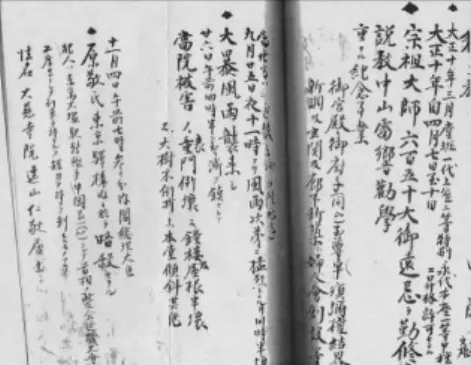
![Figure 2. Fall of Nagara-gawa River Iron Bridge (Source: Photo book of the Noubi Earthquake [8] )](https://thumb-ap.123doks.com/thumbv2/123dok/10190032.0/3.892.277.619.747.972/figure-nagara-river-bridge-source-photo-noubi-earthquake.webp)
![Figure 3. Damage of Nagoya Postal Telegraph Office (Source: Photo book of the Noubi Earthquake [8] )](https://thumb-ap.123doks.com/thumbv2/123dok/10190032.0/4.892.274.622.210.437/figure-damage-nagoya-postal-telegraph-office-source-earthquake.webp)
